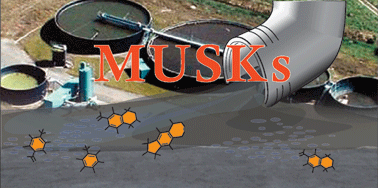A review of sewage sludge regulations and land application practices by the United States National Research Council (2002) recommended development of improved analytical techniques to adequately identify and quantify new chemical contaminants, such as synthetic musk compounds in Class A sewage sludge (i.e., biosolids). This prompted the development of a rugged analytical method using gas chromatography coupled to mass spectrometry to detect this group of organic pollutants in biosolids. In this paper, the term “biosolids” is used interchangeably with “sewage sludge”, which is defined in the regulations and used in the statue (Clean Water Act). Samples of Class A biosolids obtained from sewage treatment plants in Los Angeles, California, the City of Las Vegas, Nevada, and also in the form of a commercial fertilizer, were extracted using pressurized liquid extraction technique, subjected to gel permeation chromatography clean-up, and analyzed by GC/MS using the selected ion monitoring mode. The method developed has the potential to detect synthetic musk compounds in complex matrices, may provide accurate data useful in human health and environmental risk assessment, and may be useful in determining the efficacy of municipal sewage treatment plants for removing synthetic musk compounds.

You have access to this article
 Please wait while we load your content...
Something went wrong. Try again?
Please wait while we load your content...
Something went wrong. Try again?


 Please wait while we load your content...
Please wait while we load your content...